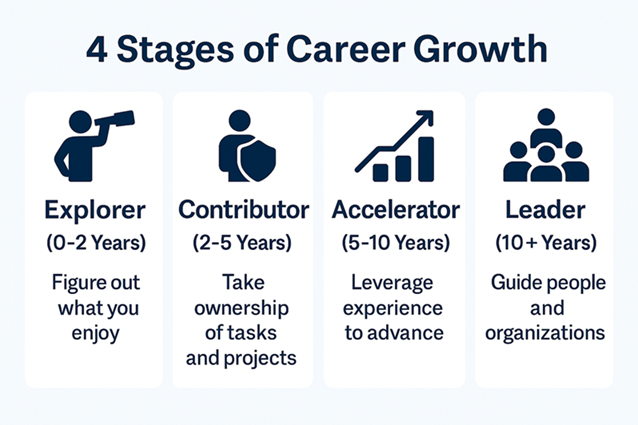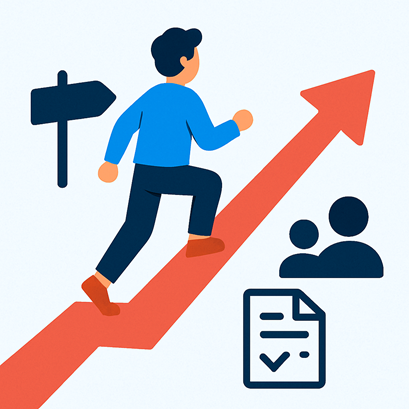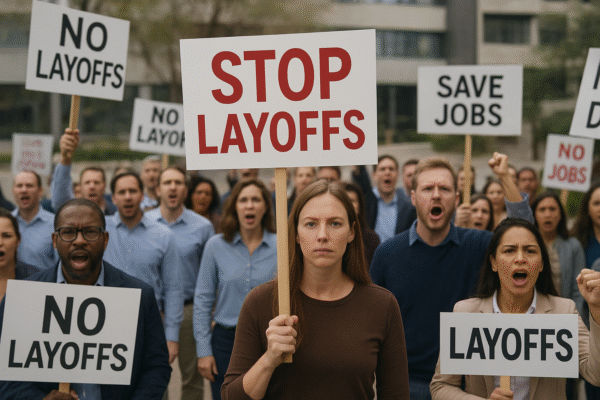“Most people are stuck because they’re solving the wrong career problem at the wrong stage.” – Stealing the Corner Office
A few years ago, I was sitting at my desk, wondering if I was already too late.
Too late to switch. Too late to grow. Too late to build a career I’d actually enjoy.
I wasn’t alone.
According to a 2023 LinkedIn survey, 61% of professionals said they felt “off track” in their career path — unsure how to pivot or progress.
It wasn’t about manipulation or shortcuts.
It was about unspoken rules — the real strategies people use to rise, while others plateau despite their hard work.
⏳ Am I Too Late to Build a Career?
Let’s bust this myth first.
If you’re still breathing and learning — it’s not too late to build a career that marks your footprint.
A study by Harvard Business Review found that the average age of people who made a major career change (into leadership or new industries) was 39.
And the data backs it:
| Career Change Age | % of Successful Transitions |
|---|---|
| 25–34 | 22% |
| 35–44 | 41% |
| 45–54 | 25% |
| 55+ | 12% |
Your timing isn’t the problem. The lack of a roadmap is.
That’s why, to build a career that is only yours, requires understanding the stages and strategy behind it.
🚀 The 4 Stages to Build A Career
“Those who get promoted aren’t always the smartest — but they’re almost always the most strategically social.”
Every fulfilling career journey goes through these stages:
1. Explorer (0–2 years)
You’re figuring out what you enjoy. Learning the ropes. Mistakes are high, but so is growth.
2. Contributor (2–5 years)
You start owning tasks and projects. Your performance begins to matter.
3. Accelerator (5–10 years)
This is your career sweet spot. You have enough experience and clarity to make bold moves — role switches, management transitions, high-impact projects.
5-10 Years of Experience is Your Career Sweet Spot. Read more here.
4. Authority/Leader (10+ years)
You lead people, influence strategy, or create value at scale. This is where your personal brand and leadership are most visible.
🧠 Insight: Don’t just grind — plan which stage you’re in, and what the next move should be.

🧭 What Is a Career Plan?
A career plan is your personal GPS in the professional world. It defines:
- What skills to build
- What roles to aim for
- What relationships to invest in
- What outcomes define “success” for you
Without a plan, you risk getting busier — but not better.
👉 Download your free & editable Career plan template by end of this blog article.
🔧 How Can I Create My Own Career?
Here’s a 6-step approach:
1. Break Free from the Illusion of Meritocracy
Yes, performance matters. But visibility, relationships, and politics often matter more.
Top performers don’t always get promoted — visible performers do.
📖 “Stealing the Corner Office” by Brendan Reid emphasizes this: Promotions aren’t always about merit — but about strategic behavior that signals leadership.
2. Design Your Career Roadmap
Use the 4 stages model. Ask:
- What do I want in 3 years?
- What roles or industries align with it?
- What new skills, projects, or mentors do I need?
3. Build Relationships (Not Just Skills)
Networking isn’t sleazy — it’s survival.
Networking isn’t just about collecting business cards; it’s about building genuine relationships and establishing a strong professional network
Start small: attend internal events, comment on colleagues’ posts, ask for 1-on-1s, offer help generously.
🧠 Fact: 70% of jobs are filled through networking, not online applications.
4. Showcase Your Work
Visibility trumps humility — if no one sees your greatness, it doesn’t count.
No one can advocate for you if they don’t see your impact.
Present your work. Write about your projects. Share wins in team channels.
Visibility > Hard work (when it comes to promotions).
5. Build a Personal Moat
Leaders aren’t always the best executors — they’re the best narrators of success.
Become known for something — whether it’s project delivery, communication, or creative solutions.
That’s your career brand.
6. Learn from Power Moves
Read books like “Stealing the Corner Office” or “The First 90 Days.”
Learn the soft power behind rising fast: perception, timing, and influence.
Start building with intention.
And when you do —
🪙 You won’t just “have a job.”
🎯 You’ll own a career.
🎯 Conclusion: Build Your Career With Strategy, Not Just Speed
Building your career isn’t about being the best at everything.
It’s about being clear, visible, and strategic.
Take control. Step out of the meritocracy illusion. Make your work known. Invest in people who matters most.
And most importantly — have a plan. And your career development journey starts right here right now! Just grab our free and editable career plan template crafted to help you.
✨ Bonus: Grab the Free Career Plan Template
Download it, print it, or duplicate it in Google Docs. Start filling it out today.
📥 [Get the Career Plan Template → 👇 ]
✨ Further reads
Don’t let your journey to build a career that is as great as you stop here. I found following resource quite useful.
🔗 Harvard Business Review – 6 Ways to Take Control of Your Career Development
https://hbr.org/2018/01/6-ways-to-take-control-of-your-career-development-if-your-company-doesnt-care-about-it?utm_medium=social&utm_campaign=hbr&utm_source=LinkedIn&tpcc=orgsocial_edit
This article provides actionable insights into career ownership, building skills, and navigating growth opportunities.





Leave a Reply